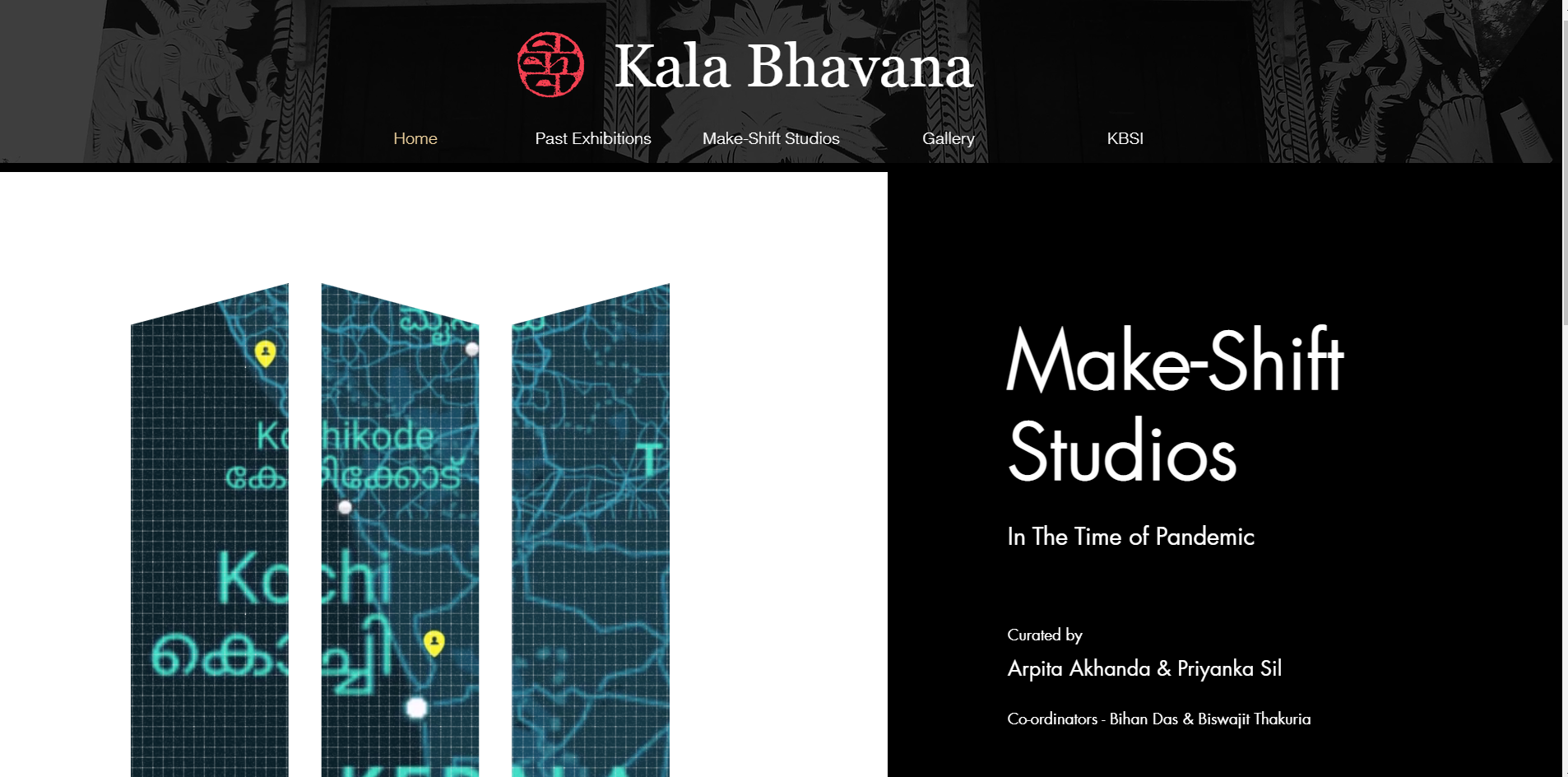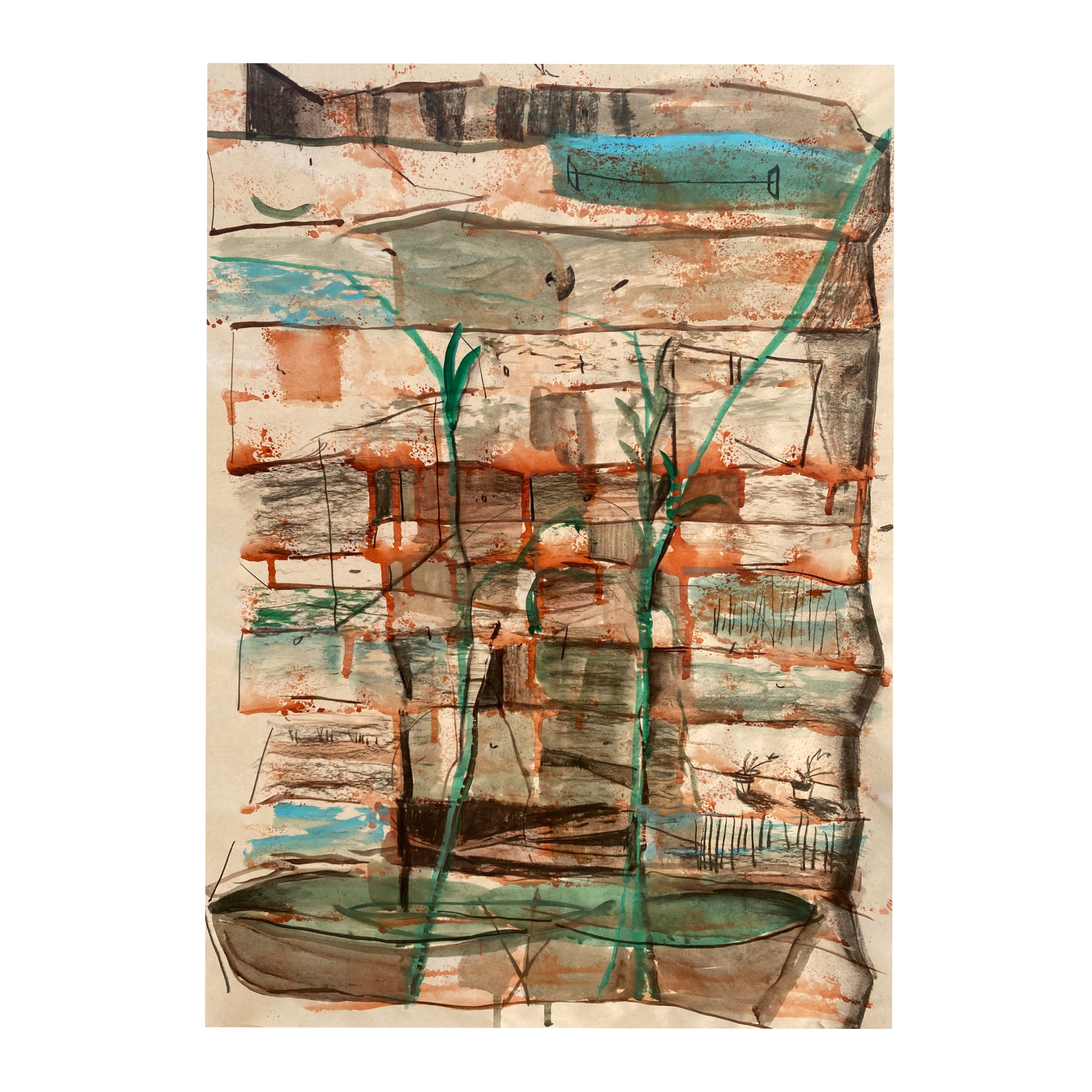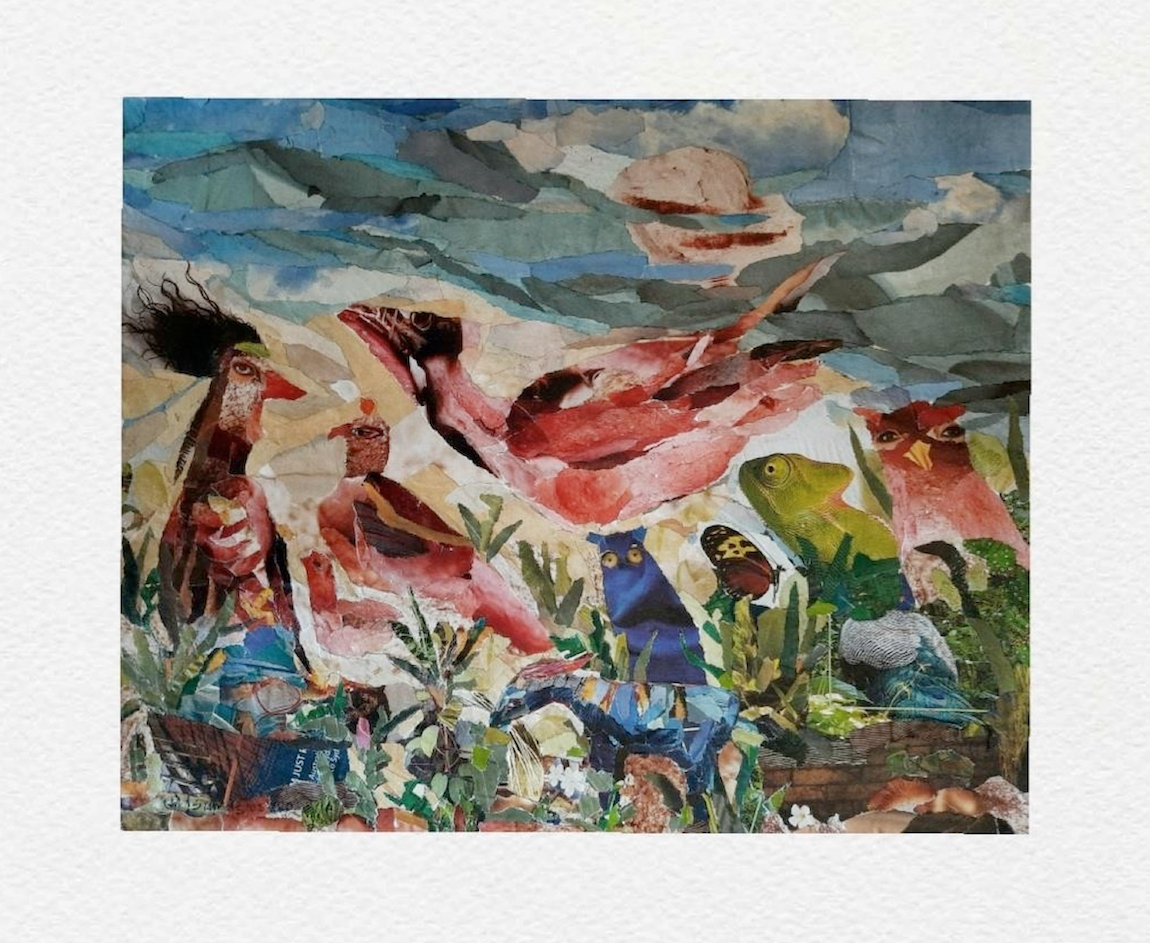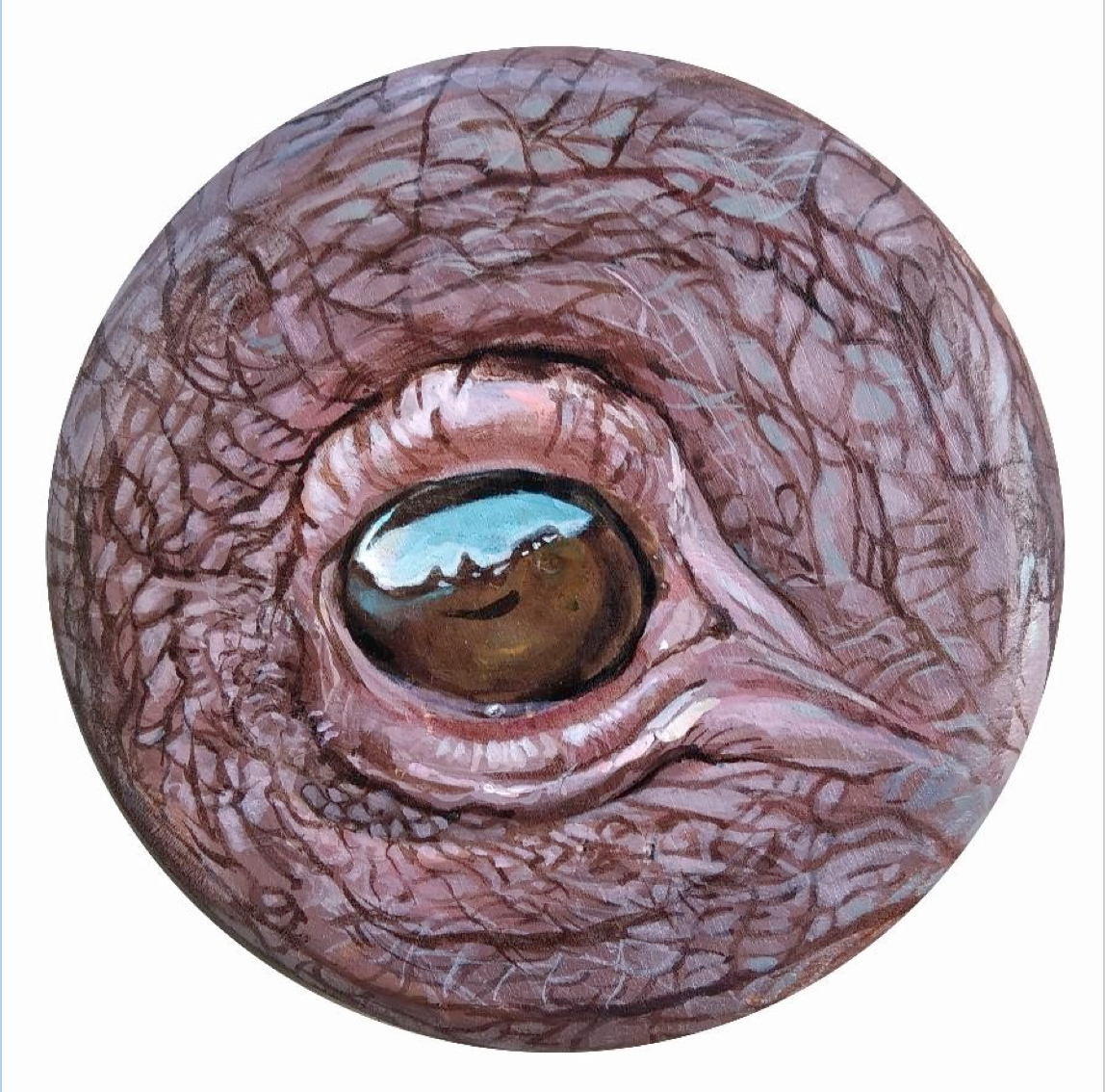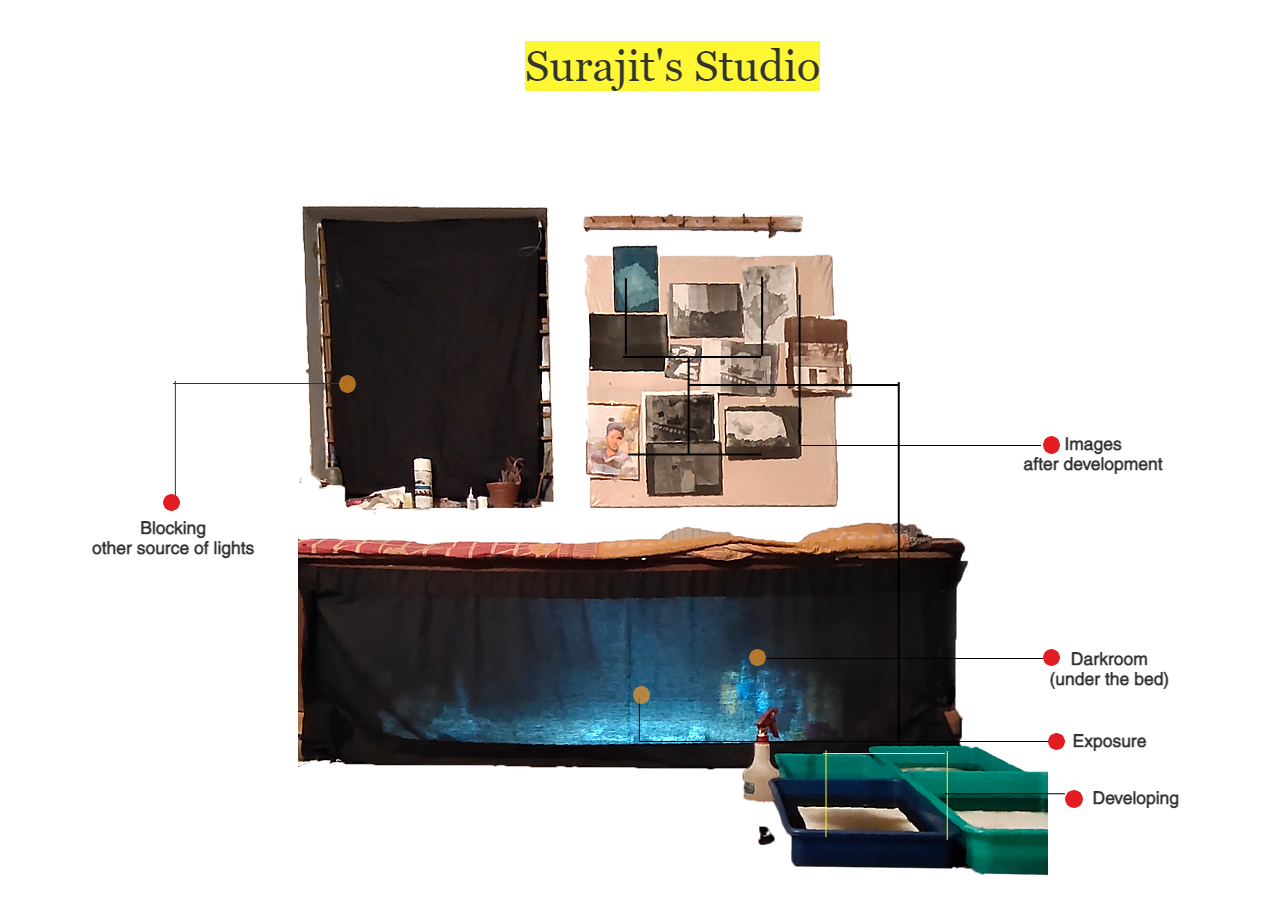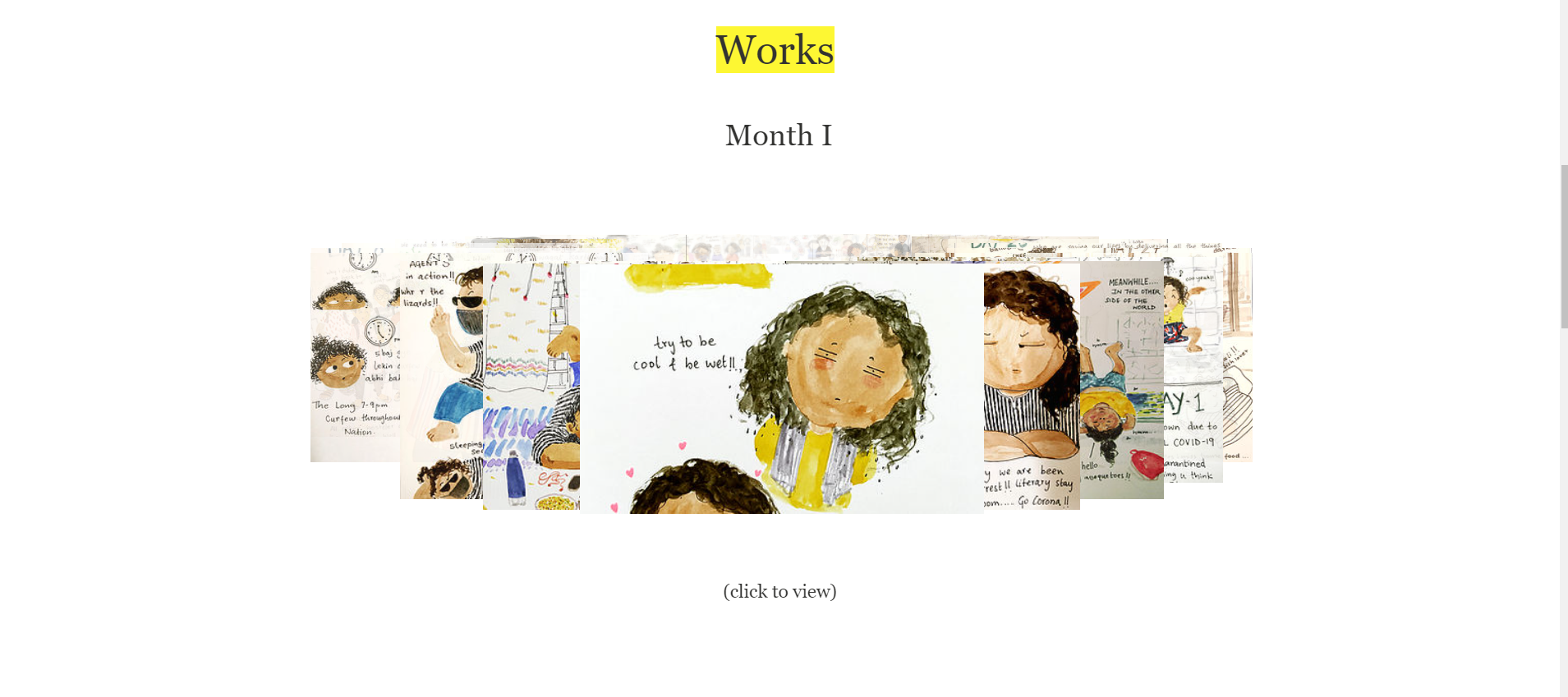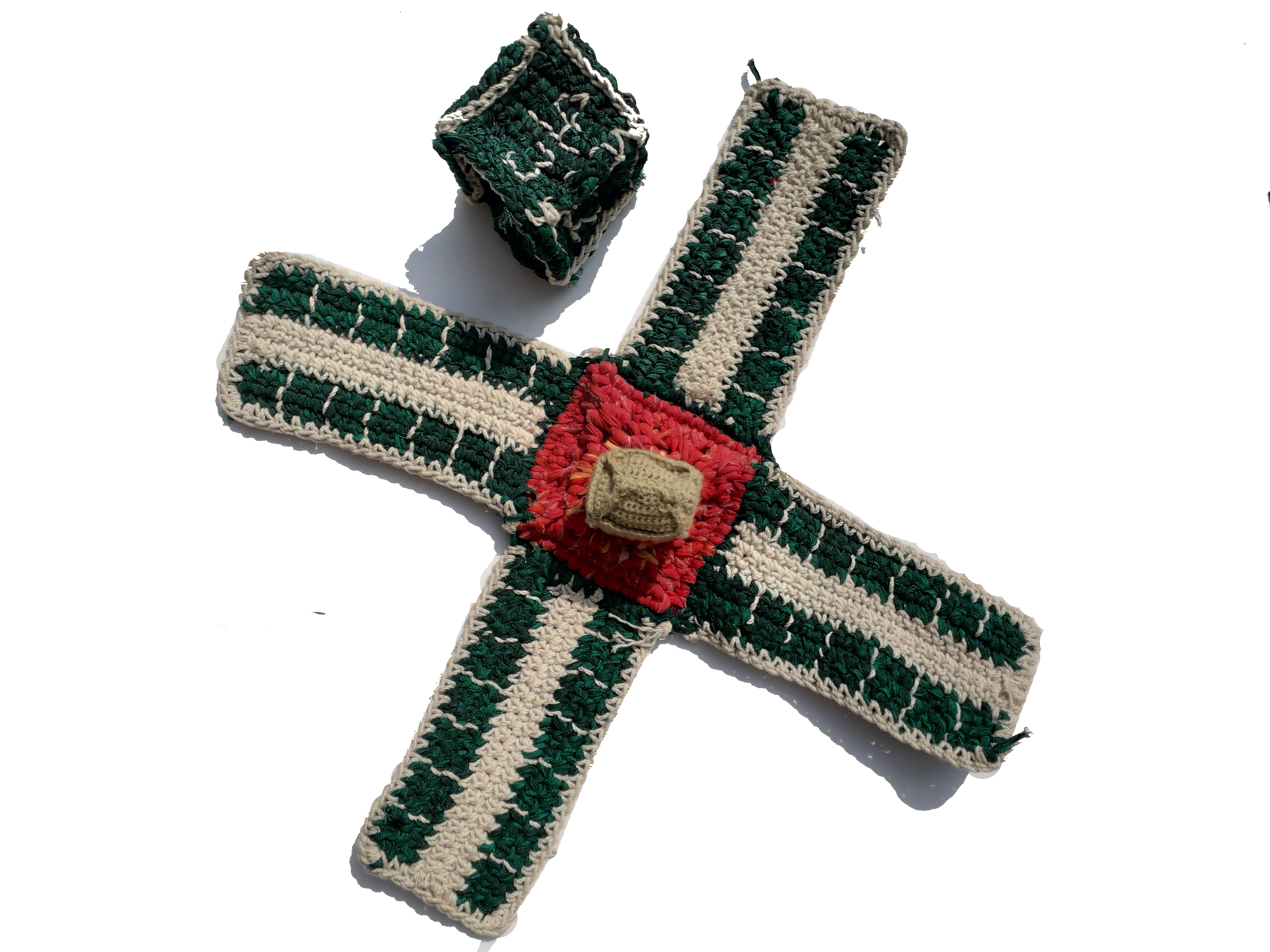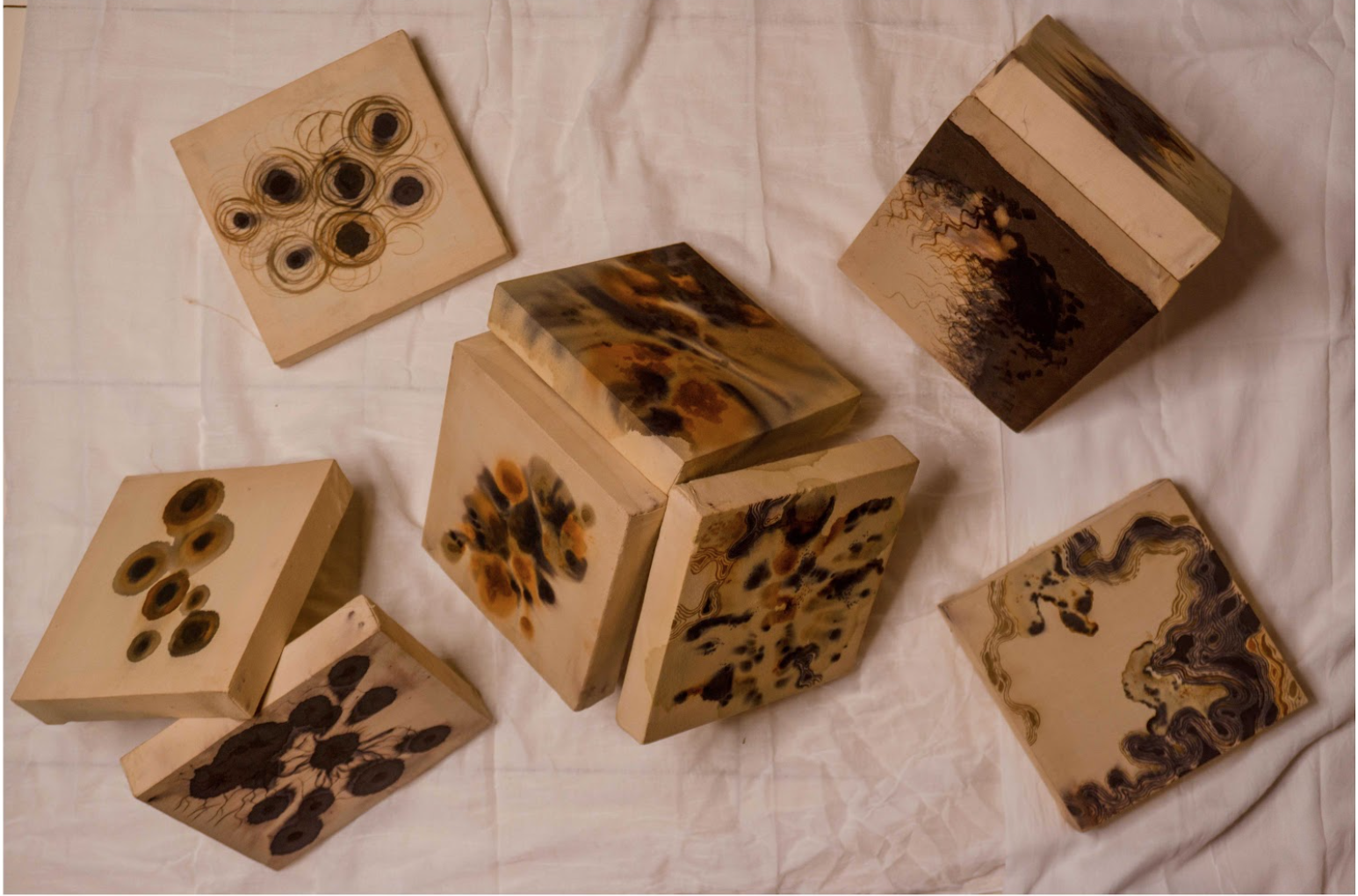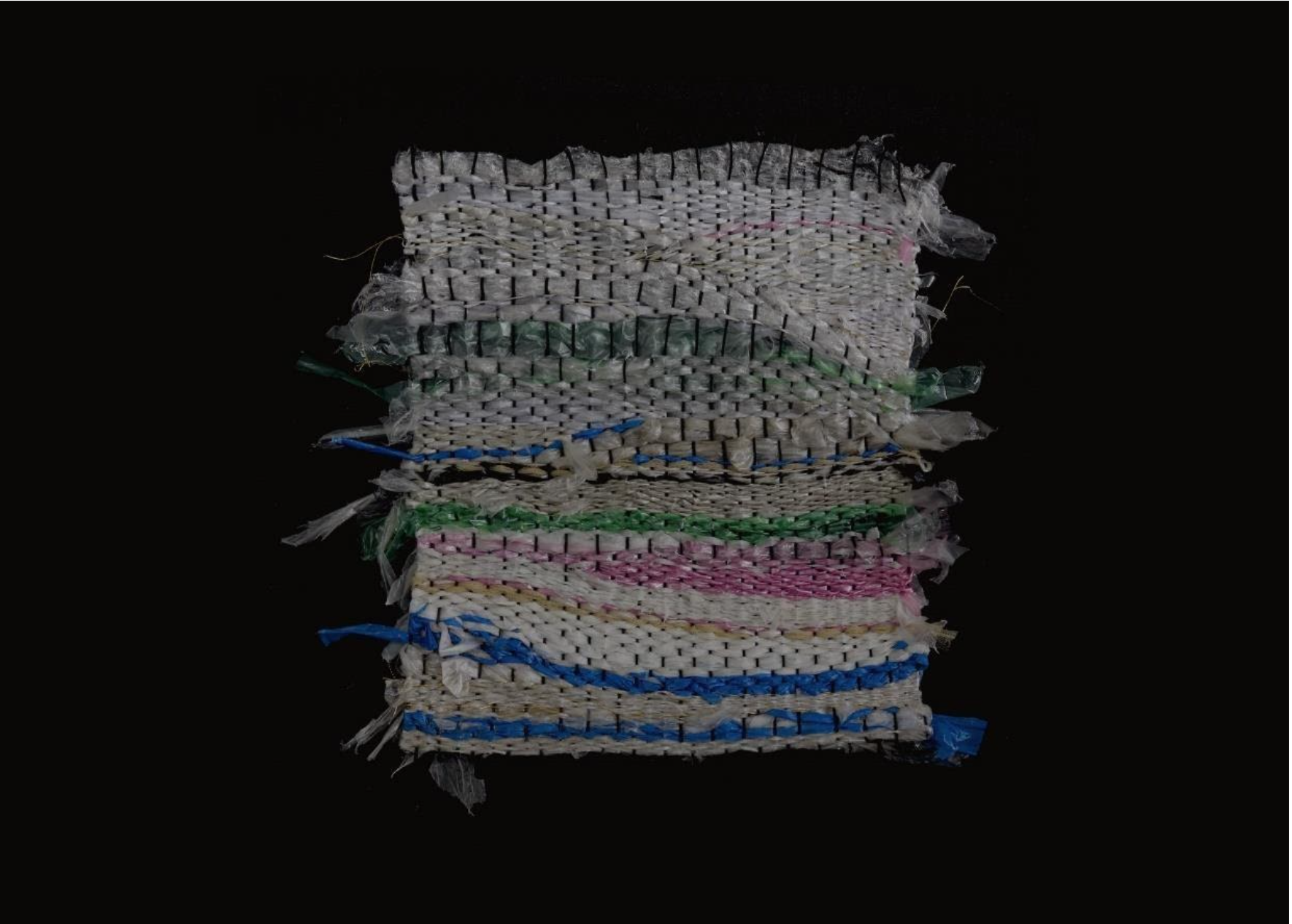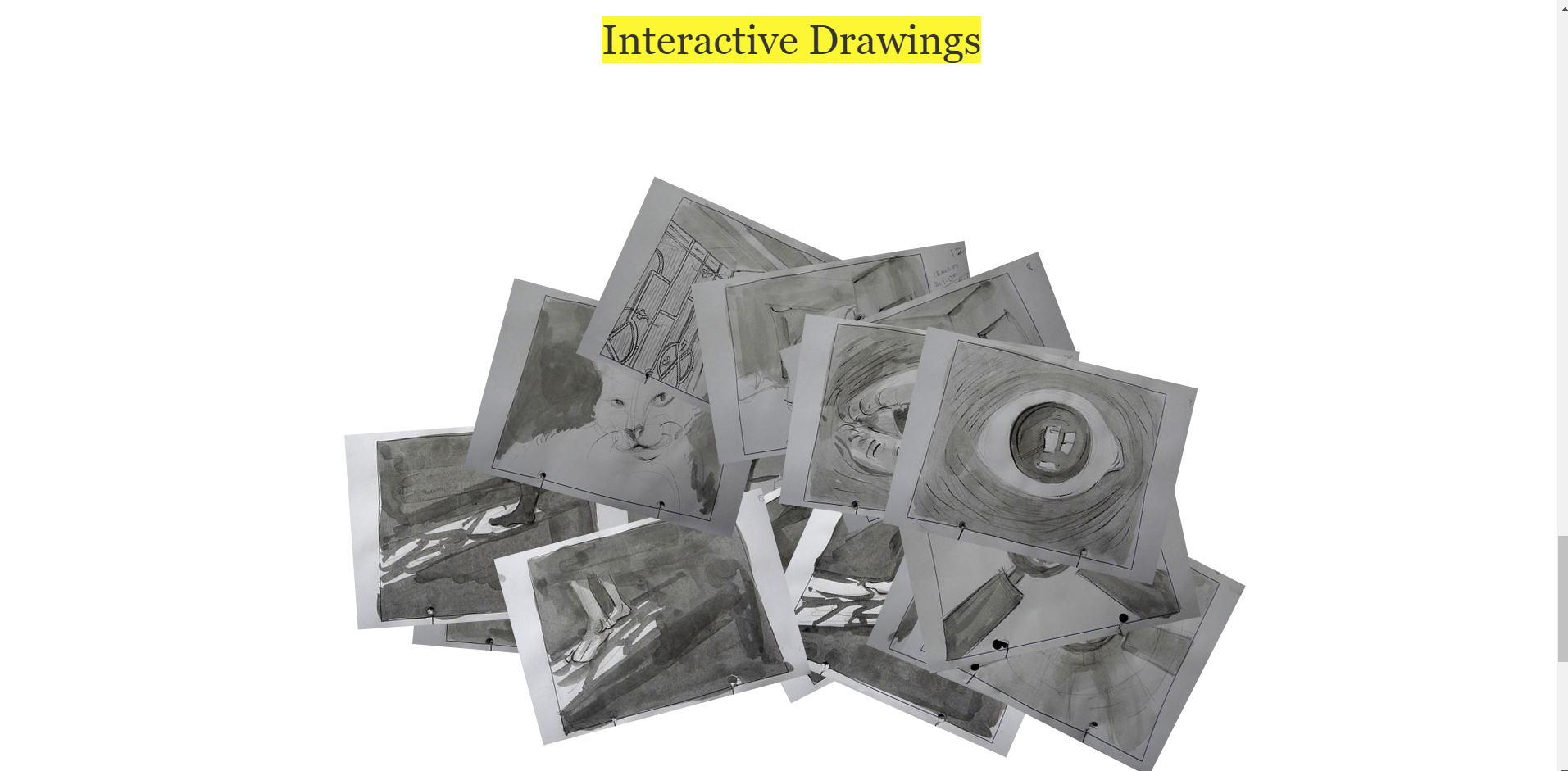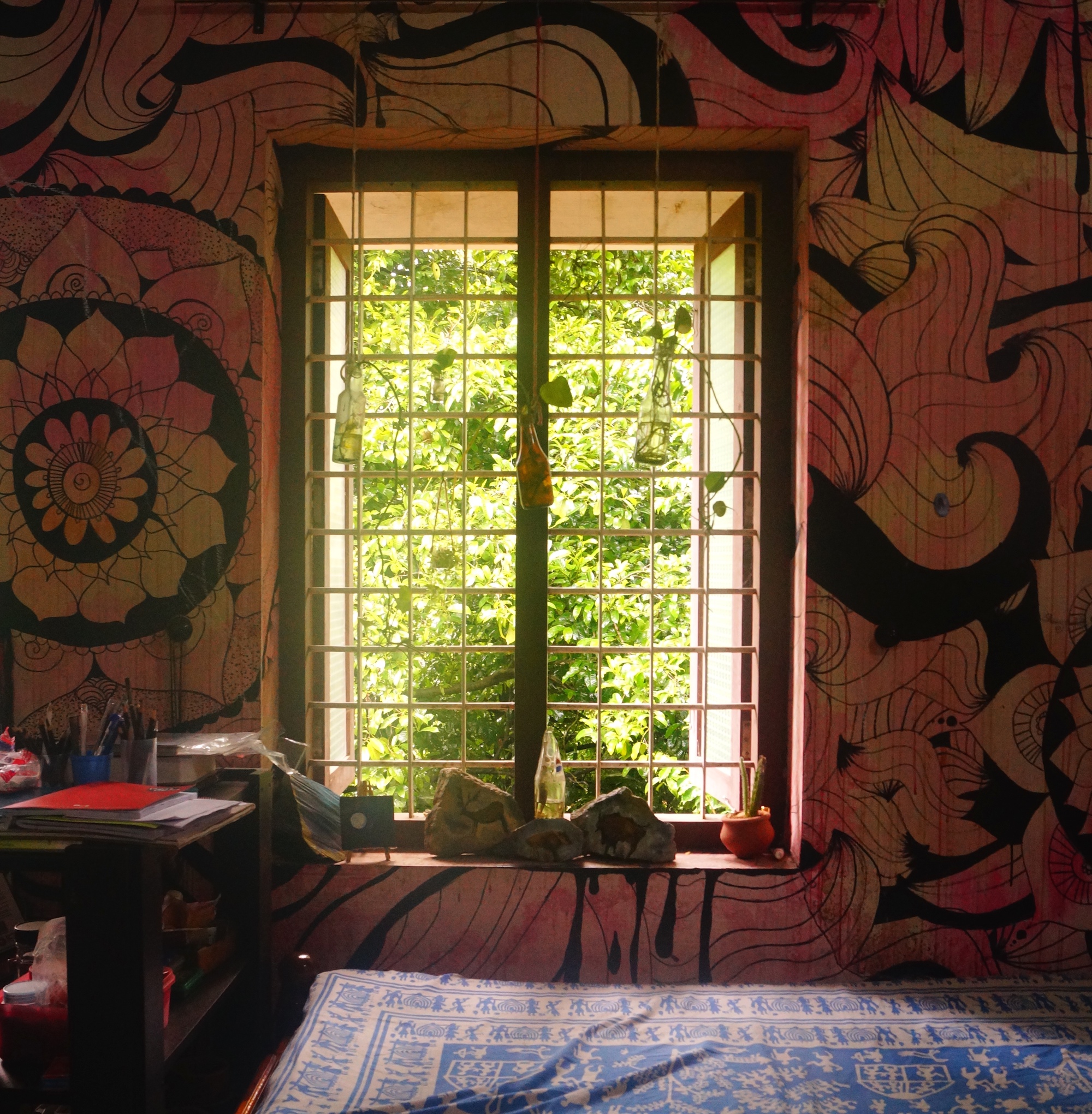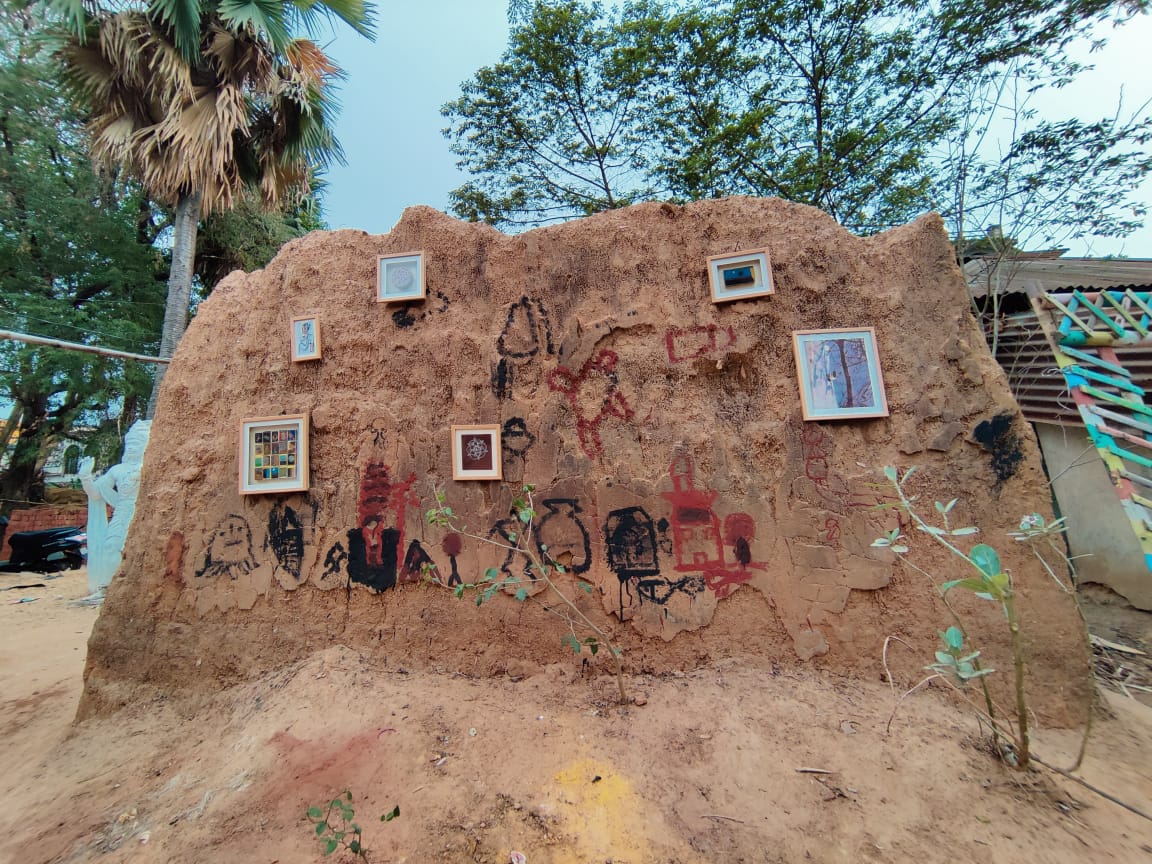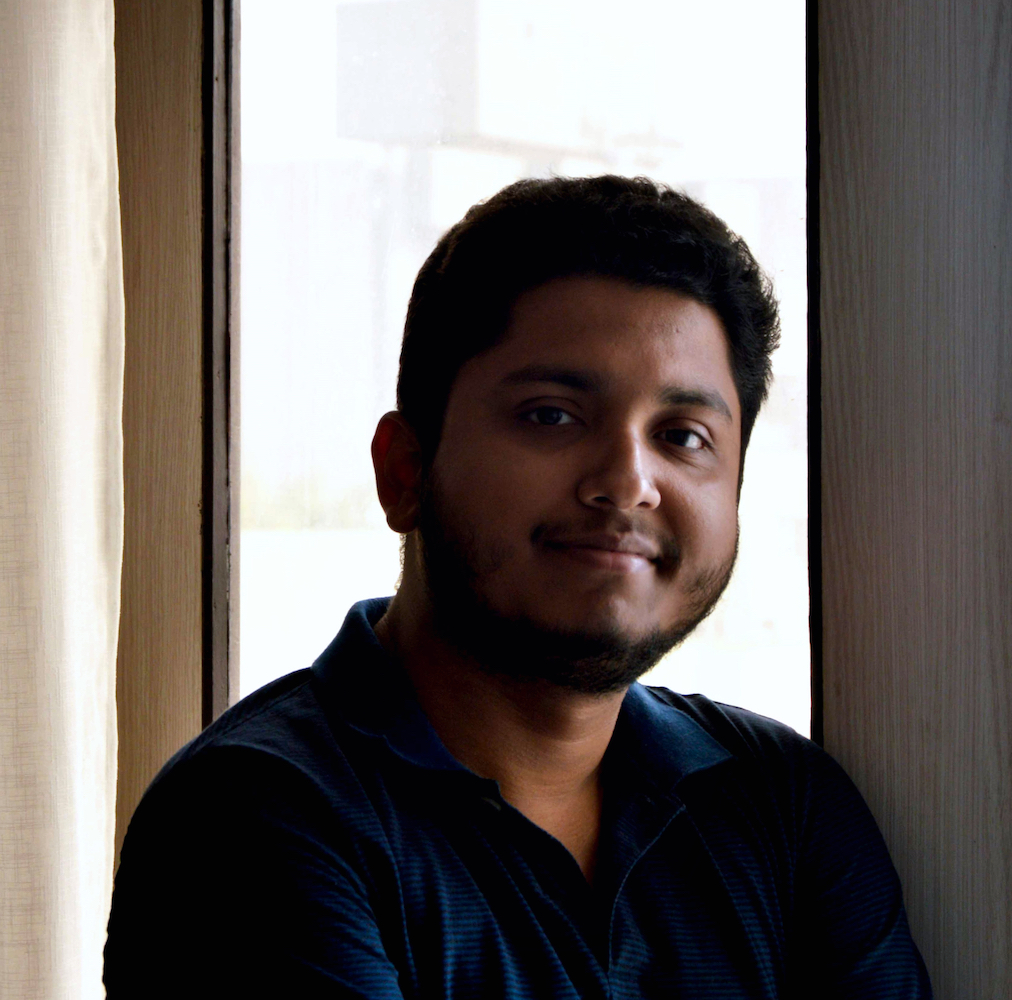‘MAKE-SHIFT STUDIOS’ | Shantiniketan, India
EAS is pleased to highlight an exceptional exhibition that emerged from the Kala Bhavana, the Fine Arts department of Visva-Bharati University, a distinguished centre for visual art practice and research in India. Students there, challenged by pandemic restrictions, created studios at home while communicating and sharing their work over the internet. Asking questions like ‘What happens when access to the studio is suddenly cut off? How does it affect one’s practice? Can one recreate/replace that space? What changes during that shift?’ co-curators Arpita Akhanda and Priyanka Sil, along with organizers Bihan Das & Biswajit Thakuria (current students), created an online exhibition highlighting students’ make-shift studios and work across the semester. Rahul Majumder, a Senior Research Fellow in the Department of History of Art, shares here his review of the exhibition, revealing how limitations taken in stride can lead to new directions and innovations with the capacity to influence and transform art practices.
A Review for the 'Make-Shift Studios’- an online art exhibition
Navigating unprecedented circumstances and negotiating artistic language.
by Rahul Majumder, Senior Research Fellow, Department of History of Art, Kala Bhavana, Visva Bharati
An artist's 'studio' had been the locus of discussion since its notion as an exclusive creative workspace emerged in the Renaissance workshops. Since then, through numerous 'isms', the concept of a studio has gone beyond just being a physical-geographical place to the psychological locale of a creative individual.
The online platform, Kala Bhavana Student Initiative, created by the students of Kala Bhavana, is hosting 'Make-Shift Studio'- an online art exhibition since 12th July 2021, curated by Arpita Akhanda & Priyanka Shil and coordinated by Bihan Das & Biswajit Thakuria. The exhibition explores the idea of transitory workspace developed by a set of 14 selected artists and two student collectives, as they were being cut off from institutional space in such unprecedented times. 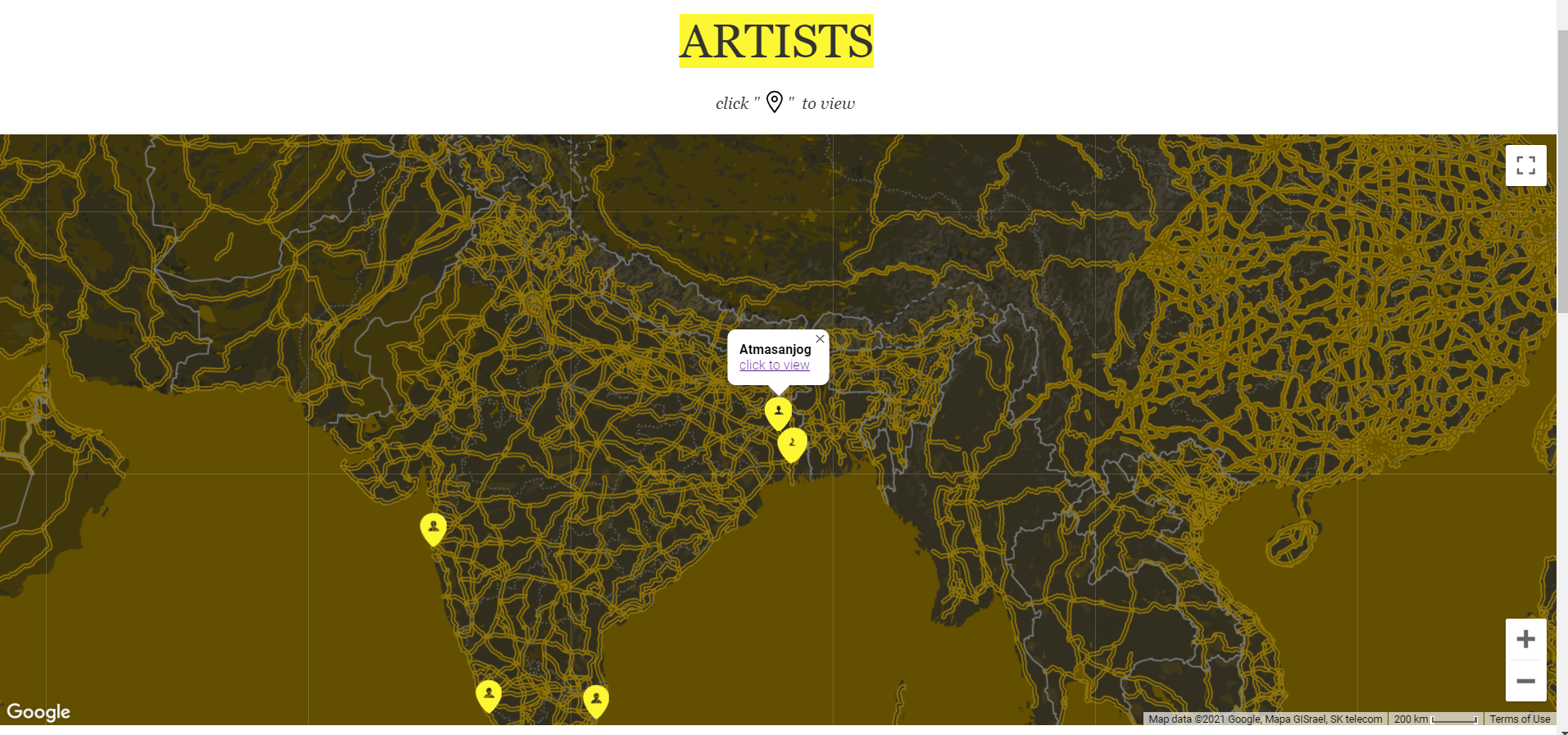 The exhibition makers visualised the dispersed location of the participants by pinning their artworks through hyperlinks on an interactive map of India. Clicking one hyperlink leads the viewer to each participant's own digital display space, further juxtaposed on a regional map where the said artist has created a transient workspace.
The exhibition makers visualised the dispersed location of the participants by pinning their artworks through hyperlinks on an interactive map of India. Clicking one hyperlink leads the viewer to each participant's own digital display space, further juxtaposed on a regional map where the said artist has created a transient workspace.
Basic groupings can be formed to discuss the artistic oeuvre on display, based on how the pandemic and its constraints had shaped the participants' practice in terms of scale and the process of art making
Make-shift workspace: Ingenious outcomes
The pandemic has confined several participants primarily to their bedrooms, and yet they learned to convert their living area as their make-shift workspace. The limitations of the physical place thus manifest into the smaller-scaled works in many instances.
Bhagyashri Dange uses leftover small pieces of wood from a furniture factory and reassembled them in various ways, further to paint impressionistic landscapes on their surfaces with thick impastos. A series of cyanotype on wood depicting wooden furniture captured from different angles is also on display.
Sourav Bera explored the medium of collage and digital collage to express his personal and the predominant shared public anxiety.
Sreelakshmi KS, in confinement to her bedroom cum studio, uses small wooden roundels and meticulously painted a series of expressive human and animal eyes on them to capture how universally the eyes speak on behalf of the soul.
Unlike others, Sun-Robin, moved through different cities, and his sketchbook becomes the locale of creativity. Around the campus, Sun-Robin captures the local flora-fauna in all its ordinariness and produces a series of captivating visuals in watercolours that also includes his fleeting inner thoughts on the paper.
Surajit Mudi's interdisciplinary practice involves the photo development process. Surajit ingeniously converted the space under his bed into a dark room to develop images from his photo archive. He also explored an alternative 19th-century photo-printing process called Charcoal Casting.
Sushmita Man captures her confined life during the pandemic through a series of illustrations chronicling her daily routine in the hostel campus as a visual journal.
On the other hand, Suvankar Mondal has converted an old mud hut into a functional ceramic studio. He also built a primitive kiln, and the 'pit fire' process provided dark pigmentation in the burned clay pots.
As the pandemic shows how people yearn for home, Vidhi Jangra explores the idea of 'home' in 'Ghar Chaupad'. She uses an old mat, rope and scrap yarn to execute the primitive version of today's indoor game Ludo, where reaching the central square, literally known as Ghar or home, wins the game.
Samima Sultana, in confinement to her rented room, experimenting with different textures, introduces organic forms as patterned motifs in her Kalamkari and Tapestry works.
Sanchit Joshi explores an inquiry 'why do we discard something?' by using discarded fabrics in a combination of one another to formulate new meaning while maintaining the original forms of the fabrics as they were being found.
Provisional Studio: Innovation at play
The improvised workspace also challenges the participants to think outside the box and act innovatively regarding their predominant art making process.
Ritwika Ganguly, has produced two short stop-motion animation clips using traditional techniques. 'A lazy afternoon' shows her mundane moments at home, captured using pen and ink. The second animation, 'The Picnic's Dream', depicts a dream-like scenario of Kala Bhavana picnics. Hand-drawn frames are juxtaposed with black and white images of old picnics to create a dialogue between the artist, her representation in drawings, and the olden times' photographs.
Maya Mima has explored the medium of embroidery in her tiny room. Her works consist of patchworks and figurative stitch-works done on quilts, based on her childhood memories. In another painting series, the cityscape in its all mundaneness is captured in fragments as seen from her terrace.
Rishma Mariya Johnson's bedroom cum make-shift studio becomes alive with her emotive doodles of a surreal artistic world on the walls, painted in bright colours, expressing a childlike spontaneity.
On the other hand, Skarma Sonam Tashi couldn't return to his hometown and was confined to his hostel room. He creates imageries of his hometown on the rippling surface of egg trays that evoke a sense of his mountainous state.
Collective minds: Collaborative process
'Make-Shift Studio' also exhibits two student collectives and their shared projects.
Atmasanjog, an interdepartmental collective of three students, engaged with the adjacent village community and brought forth a collaborative project beyond the traditional media and medium. In one work set (titled, KutumKatum), mundane organic elements of rural life such as uprooted bamboo roots, fallen branches and cow dung are recontextualised to create new meanings. In another work, an outer wall of a house and a dilapidated wall become the backdrop for murals done in earthly hues of red and white.
Another art collective of nine students, Uthon, explores how collaborative projects can be developed inside and outside the institutional periphery. In a performative project, 'An event-based mapping', the collective explores interconnectivity between 'body' and 'home' in the context of colonial architecture. The group traced a plan of their chosen edifice on land upon which they performed a written script they developed.
It is interesting to observe how a workspace influences the psyche of an artist and left marks directly or indirectly in their works. At the bottom of each page of the artists, the artists had to answer a common question: 'What are you going to take forward from this make-shift studio practice experience?', presumably by the curators. This emphasises how the exhibition is envisioned by putting the same value on the exhibiting artworks and the 'Make-Shift' studios. Furthermore, the website's design language helped the show demonstrate its nuances: the location of the artists and their provisional workspace, as well as the innovative display format. The coordinator's note mentioned that they would feel successful if they could actualise the show. I believe the show's success rests on how realistically the makers managed to reciprocate the critical vision of the show through a digital platform.
ABOUT THE REVIEWER
Rahul Majumder is an Art History major from Maharaja Sayajirao University of Baroda (2017) and completed his graduation in History of Art from Kala Bhavana, Visva Bharati (2015). He has contributed as an editorial assistant for a forthcoming centenary volume on Kala Bhavana to be published by Lalit Kala Akademi and an Art History research associate for an archival research project (INTACH) on the tangible heritage spaces between Satna to Panna. His research articles has been published in reputed journals like Kalakalpa, Art & Deal and Academic Discourse. Rahul is currently pursuing PhD at Visva Bharati. His Doctoral Thesis focuses on the study of the performative pictorial tradition of Santhal Patachitra in eastern India.
